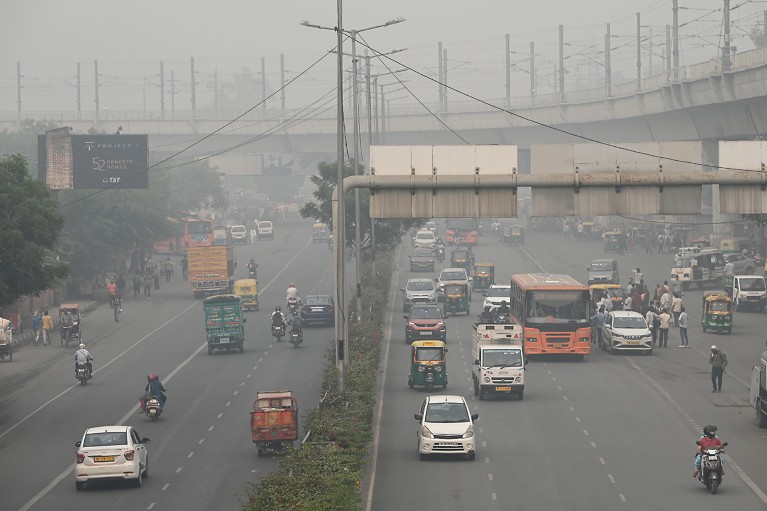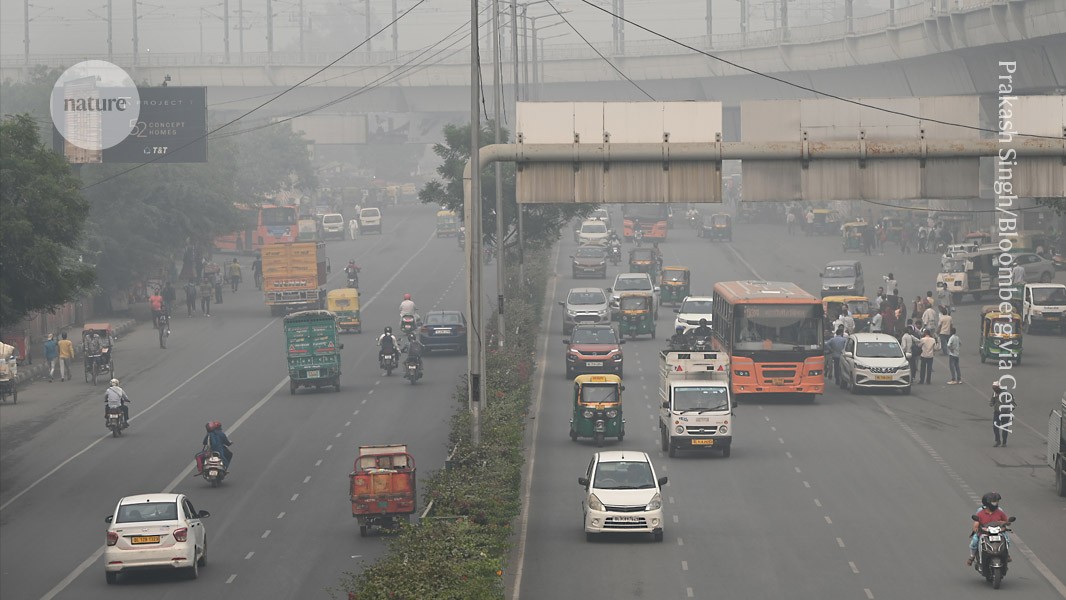
Pollution levels in Delhi have hit hazardous levels, prompting the Indian government to try cloud seeding as a radical approach to tackling the problem.Credit: Prakash Singh/Bloomberg via Getty
An ambitious attempt by the Indian government to combat Delhi’s hazardous air pollution by inducing artificial rain has failed to trigger any precipitation, prompting researchers to question why the experiment went ahead.
The experiment was conducted in collaboration with the Indian Institute of Technology (IIT) Kanpur on 28 October. Two aircraft flew over several areas of Delhi and released flares containing particles of silver iodide and sodium chloride into the atmosphere, with the goal of catalysing condensation and producing rain.
The Delhi government and IIT Kanpur say that the seeding experiment led to a slight decrease in pollution, but scientists think the improvement had little to do with the intervention.
“It seems like the skies have cleared, but it is because the weather conditions have changed. That’s no credit to the seeding efforts,” says Shahzad Gani, an aerosol scientist at IIT Delhi.
Toxic smog
Every winter for almost a decade, Delhi and surrounding areas have battled hazardous levels of fine particulate matter in the air, produced by industry, vehicle emissions and the burning of crop stubble in neighbouring states. On some days, pollution levels are up to 20 times higher than the World Health Organization’s recommended limits.
In October and November, the air in and around Delhi becomes cooler, drier and more stable, which slows the dispersal of pollutants. The Delhi government has tried taking various measures to improve air quality, such as shutting down polluting industries and banning firecrackers during Diwali festivities. But poor compliance has meant that most of these initiatives have had little effect. This year, when pollution levels became hazardous the night after Diwali celebrations, the government decided to take a different approach.
The technique of cloud seeding — firing small particles such as silver iodide and sodium chloride into existing clouds to help water vapour to condense — has been around since the mid-twentieth century. But reliable proof that the process can induce rainfall on demand is lacking, and its ability to disperse pollution has not been tested, says Gani.
Roxy Mathew Koll, a climate scientist at the Indian Institute of Tropical Meteorology, Pune, says the atmospheric conditions were not suitable for the experiment to succeed. “Cloud seeding can only enhance rainfall if there are already moist, convective clouds with sufficient liquid water. In dry or stagnant air, there’s simply nothing to seed,” Koll says. At the time of the experiment, “two storms — a depression in the Arabian Sea and a cyclone in the Bay of Bengal — were pulling the moisture into those areas and making Delhi drier”.
Another trial scheduled for Wednesday was cancelled. Manindra Agrawal, director of IIT Kanpur, told Indian news agency ANI that the experiment will be postponed until a day when the moisture content of clouds is at least 40–50%.
Earlier this year, the Royal Rainmaking Project in Thailand tried to combat pollution by spraying cold water from planes, hoping that this would allow some of the particulate matter trapped in a layer of warm air in the atmosphere to dissipate.


